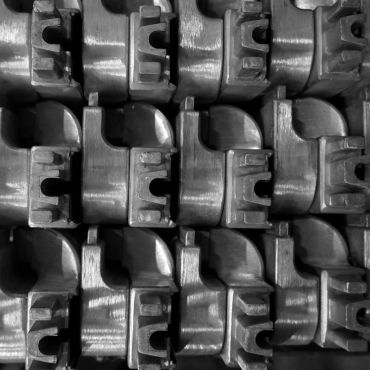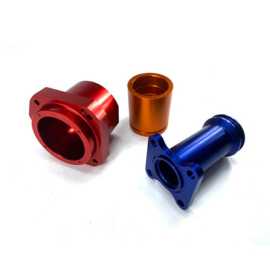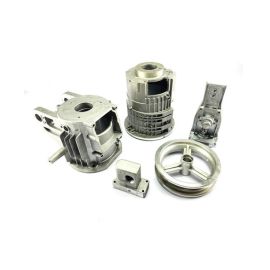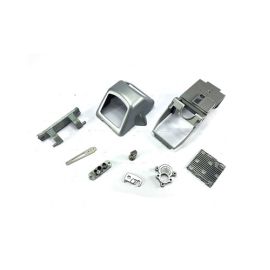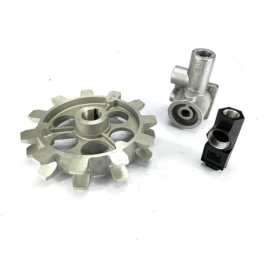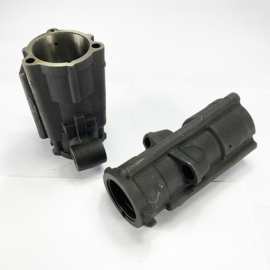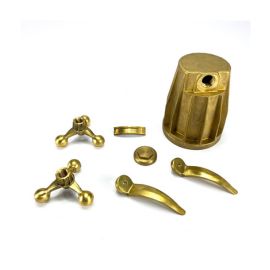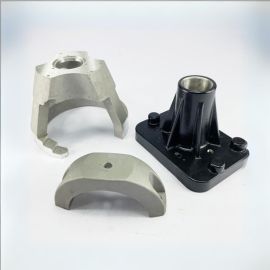What is Sand Casting?
Sand casting is a common casting process in foundry production.
- Use sand to make the mold, and the molten metal is poured into the preformed sand mold.
- After cooling, the sand casting product is shaped.
- The sand inside the product is removed through sand shaking, cleaning, heat treatment, and the final sand casting part is obtained.
This process can produce metal parts of various sizes and shapes.
Sand casting is an “economical and practical” method. It is one of the oldest metal processing methods in China.
- Sand mold casting is completed in two fixed mold frames.
- First, the product model is placed in one mold frame and covered with sand.
- Then the other mold frame is overlapped, also covered with casting sand, and compacted.
- Then open the overlapping mold frame and take out the model, a mold will be formed in the casting sand.
- Overlap the mold frames together again, pour the metal liquid into the mold through the pouring port, and open a heat dissipation hole in the mold.
- After the metal liquid is cooled in the mold, you can get the same product as the model.
- Some sand-casting parts require secondary processing to improve product accuracy. Generally, grinding wheels or lathes are used for processing and polishing to remove burrs and make the castings smoother.
Sand is used to make mold and the casting process is done manually. There are many types of sand used for casting, including common red sand, quartz sand, clay sand, and corundum sand. These sands can be reused. To take out the parts, we have to destroy the sand mould, thus the production efficiency of sand casting is low.
Sand casting production cost is relatively low, and the casting accuracy is low, it is more suitable to produce parts with thick wall thickness (>3mm), rough surface (Ra12.5-100 µm), and large tolerance (T8-10). It’s used to produce large parts, and parts in small quantities, the parts made by sand casting are durable and cheap.
Sand Casting Parts with Different Materials and Current Applications
The sand casting manufacturer process is suitable for various alloys, Yontone company provides sand casting services with aluminum, iron, steel, brass, and ductile iron. Below are some sand casting products examples.
Sand mold casting can be used to produce metal parts with various complex geometries. It is very common in the production of automotive parts, such as engine blocks, intake manifolds, cylinder heads, gearboxes, water wheels, etc., which are used in the sand mold casting process. In a furnace, mold frame, and casting sand, the melted metal was poured into the cavity of a sand mold whose shape is performed in advance.
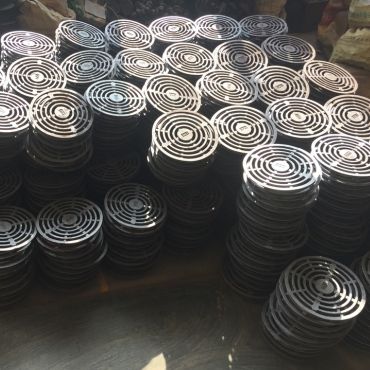
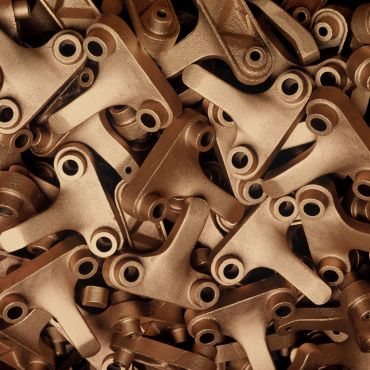
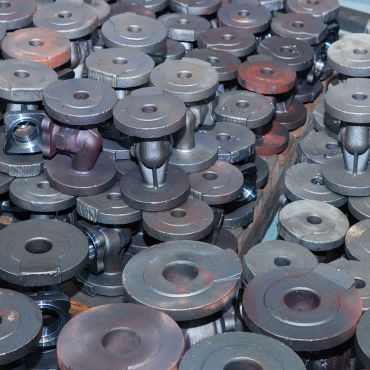
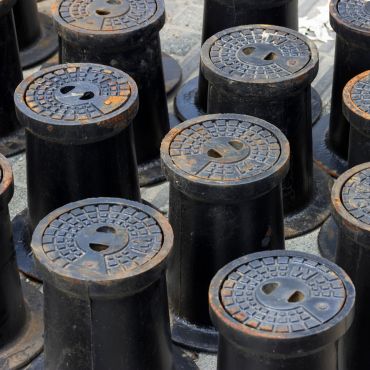
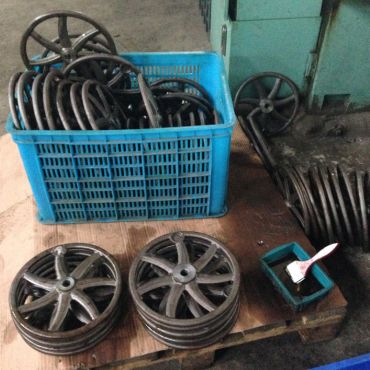
Sand Casting Processes - Step by Step
Yontone foundry supplies different types of sand casting services, brass sand casting, aluminum sand casting, iron sand casting, steel sand casting, and ductile iron sand casting.
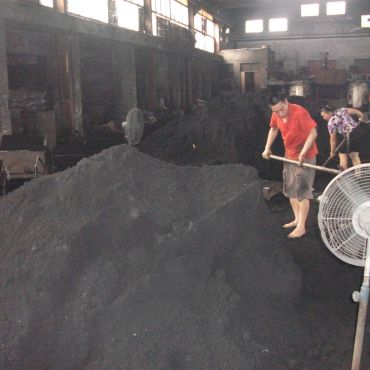
During the sand mixing stage, we prepare molding sand and core sand for the molding process using a sand mixer. Typically, sand and a suitable amount of clay are placed into the sand mixer and stirred for uniform blending.
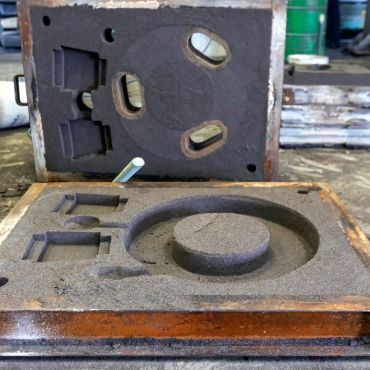
During the mold-making stage, molds and core boxes are crafted based on the part drawings. For individual items, wooden molds may suffice, while mass production may involve the creation of plastic or metal molds (commonly referred to as iron or steel molds). For large-scale production, pattern plates can be employed. Nowadays, molds are predominantly crafted using engraving machines, significantly reducing the production cycle. The mold-making process typically spans 2 to 10 days, depending on various factors.
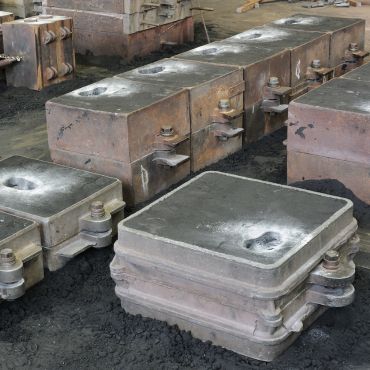
Molding (Core Making) Stage: This stage encompasses molding (forming the mold cavity using molding sand) and core making (creating the internal shape of the casting), along with mold assembly (placing the core into the mold cavity and closing the upper and lower sandboxes). Molding is a critical step in the sand casting process.
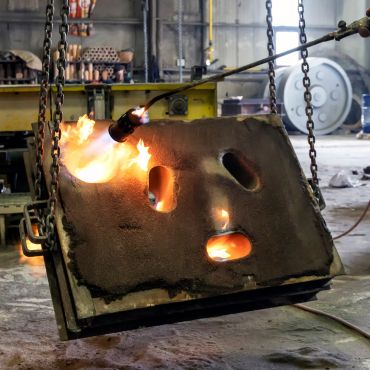
Melting Stage: In this stage, the chemical composition required for the metal is prepared, and a suitable melting furnace is chosen to melt the alloy material, creating a qualified liquid metal (meeting both composition and temperature requirements). Melting is typically carried out using a cupola furnace or an electric furnace (due to environmental considerations, cupola furnaces are now mostly phased out, and electric furnaces are predominantly used).
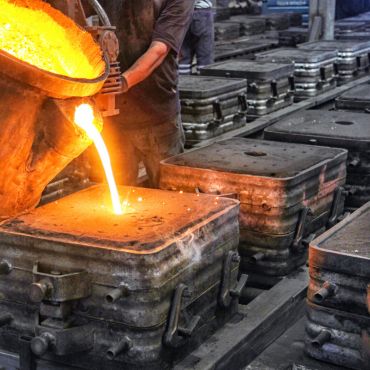
Pouring Stage: The molten iron from the electric furnace is poured into the prepared mold using a ladle. It is important to control the pouring speed to ensure that the molten iron fills the entire mold cavity. Additionally, pouring molten iron, brass, and aluminum can be hazardous, so safety precautions must be taken.
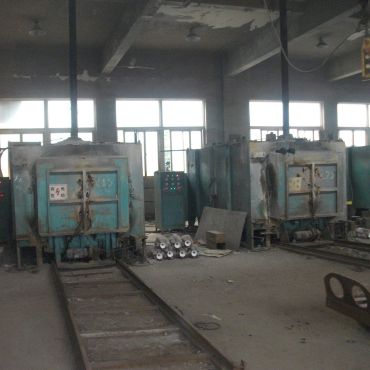
Heat treatment is primarily carried out to enhance the strength of the sand casting product and simultaneously eliminate any residual sand particles from its interior.
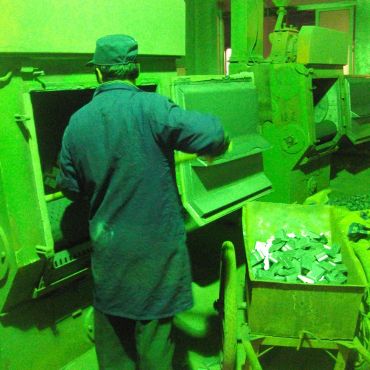
Cleaning Phase: After the molten metal solidifies post-pouring, the sprue is removed using a hammer, and the sand particles on the casting are shaken off. Subsequently, a sandblasting machine is employed for sandblasting, resulting in a clean surface for the sand casting products.
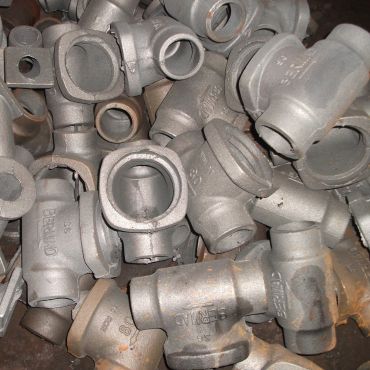
For less stringent requirements, the inspected castings can essentially be ready for shipment. For castings with special requirements or those that do not meet the specifications through casting alone, simple machining may be necessary. Typically, grinding and polishing are carried out using a grinding wheel or polishing machine to remove burrs and achieve a smoother surface for the casting.
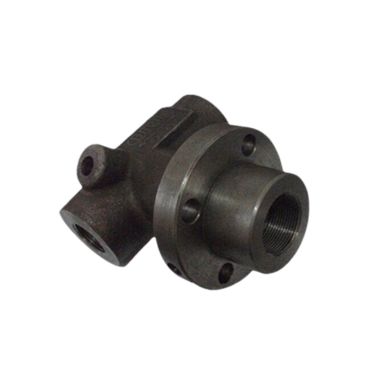
Casting inspection generally takes place during the cleaning or machining stages, and any non-conforming parts are typically identified and removed at this point. However, for certain castings with specific requirements, an additional inspection may be conducted to ensure compliance.
Advantages of Sand Casting Products
Sand casting can complete the casting of many metal raw materials, such as steel, iron, and most non-ferrous alloy materials. As long as the metal can be melted, sand casting can project be easily completed.
Compared with some other casting methods, the cost of molds and equipment used in sand casting is relatively low, and the price is also relatively low.
Sand casting can produce parts with any complex shape that cannot be completed by die casting methods, especially parts with complex inner cavity shapes. Sand casting process can solve it with small casting restrictions.
Sand molds are not limited by size, so sand casting can produce castings ranging from a few grams to tens of tons. The size of the parts can also be adjusted according to the casting requirements.
Sand Casting Mold
The mold of sand casting refers to the object that forms the casting cavity (that is, the actual appearance of the product). Generally, wooden molds can be used for single-piece production, and metal molds can be made for mass production. Currently, steel molds are the mainstream. The mold used for the sand core is called the core, and the mold used for the cavity mold is called the pattern.
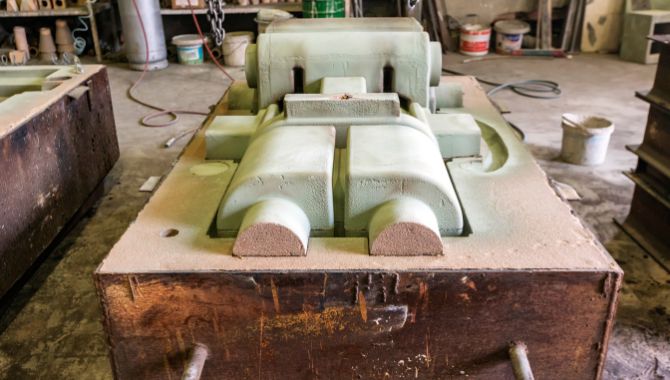
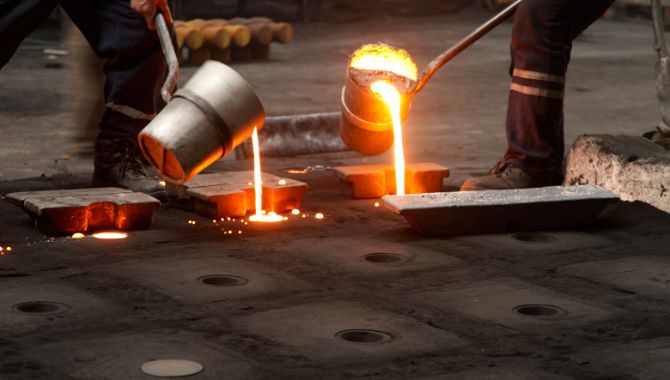
Casting Control
Before casting, several basic tests need to be carried out, such as furnace front testing to detect the five major chemical elements in the molten iron; triangular samples to determine whether the results of the inoculation treatment meet the standards, etc. After that, the qualified molten metal is injected into the sandbox equipped with the mold. Here, attention needs to be paid to controlling the injection speed so that the liquid fills the entire mold cavity. Secondly, within a certain temperature range, the higher the casting temperature, the better the fluidity of the alloy liquid. However, when the alloy liquid exceeds a certain limit, the fluidity will decrease due to excessive air absorption and severe oxidation, resulting in a decrease in casting quality.
Quality Control
For products requiring air tightness, Yontone employs machining, X-ray, and cutting methods to inspect internal conditions. Post-machining products undergo dimensional inspection using CMM to ensure each batch meets quality standards, ensuring durability and longevity.
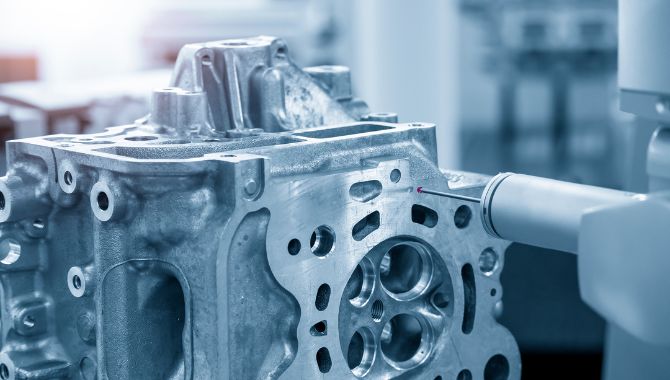
Why Choose Yontone to Be Your Sand Casting Supplier?
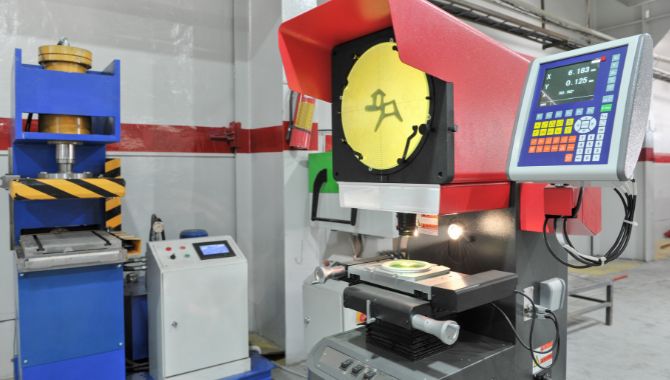
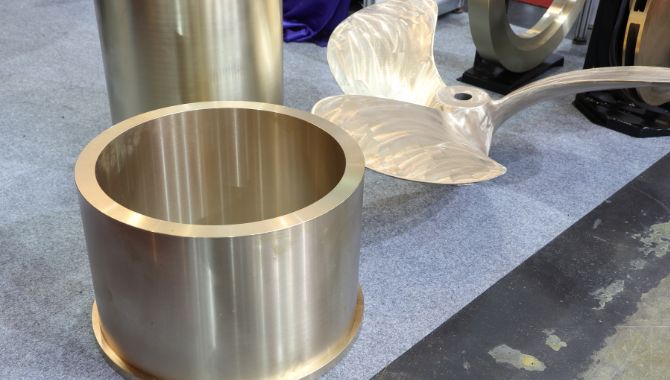
Experience: Yontone has extensive experience in sand casting production, with skilled craftsmen who each have over a decade of experience in sand casting. The products exhibit minimal porosity, ensuring a high yield of finished goods.
Services: Clients can streamline their procurement process by engaging with Yontone as their sole supplier for a variety of sand casting services, including aluminum alloy sand casting, copper alloy sand casting, iron sand casting, cast iron sand casting, and steel sand casting. This one-stop solution is designed to be convenient and efficient.
Capabilities: In addition to sand casting, Yontone offers post-processing capabilities such as heat treatment, powder coating, and machining.
Inspections: All products undergo thorough inspection using Coordinate Measuring Machines (CMM) and 2D profile projectors. Material reports, metallographic testing, heat treatment reports, and other relevant documentation are provided with each shipment.
Followup: Yontone maintains open communication with clients through weekly progress reports, utilizing various channels such as phone calls, video conferencing, emails, and photos to ensure timely and transparent updates. The company is committed to delivering products punctually.
Mission: Having successfully completed over 300 sand casting projects to date, Yontone has consistently received positive feedback from satisfied clients. The company remains dedicated to its original mission, striving to provide customers with high-quality products that offer excellent value for money.
Wild Application Fields of Sand Casting Products

The sand casting products manufactured by Yontone are widely utilized in the automotive industry, including:
- Engine components, such as cylinder blocks and cylinder heads
- Housings for transmissions and drive systems
- Components for braking systems
- Components for steering systems
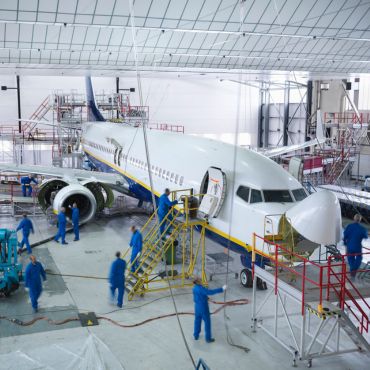
Yontone’s sand casting products find extensive applications in the aerospace industry, including:
- Aircraft engine components, such as turbine blades and casings
- Structural components for aircraft, such as supports and connectors
- Turbine jet components for aerospace engines
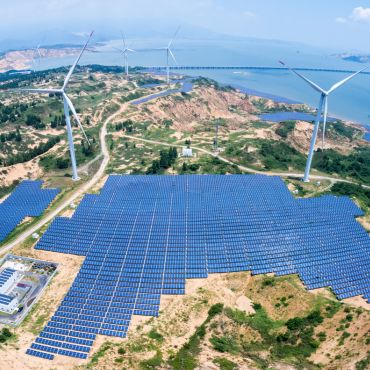
The sand casting products produced by Yontone are widely applied in the energy industry, including:
- Turbine components for power plants
- Valves and pipeline connectors for the oil and natural gas industry
- Components for wind and solar energy equipment
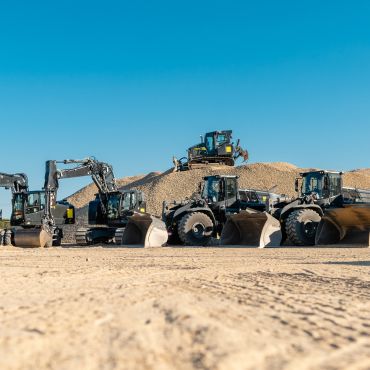
The sand casting products manufactured by Yontone are extensively used in heavy machinery and manufacturing, including:
- Components for construction machinery, such as excavator castings and cast iron parts
- Bases and supports for mechanical equipment
- Components for railway vehicles
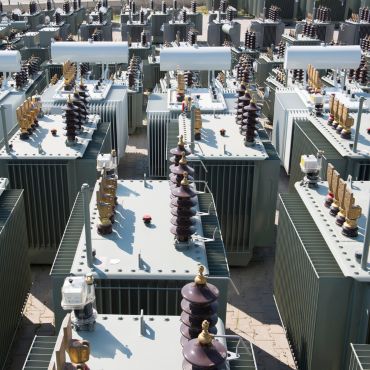
The sand casting products produced by Yontone are widely utilized in the electronics and electrical industry, including:
- Enclosures for electrical equipment
- Mounting brackets for cables and connectors
- Components for power transformers



